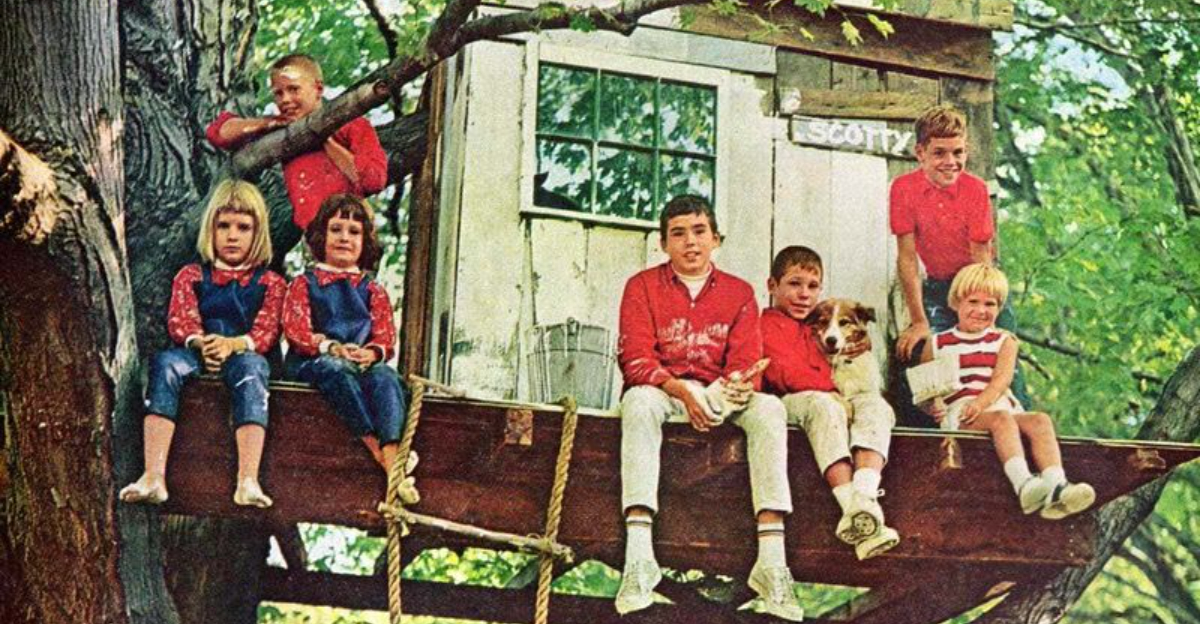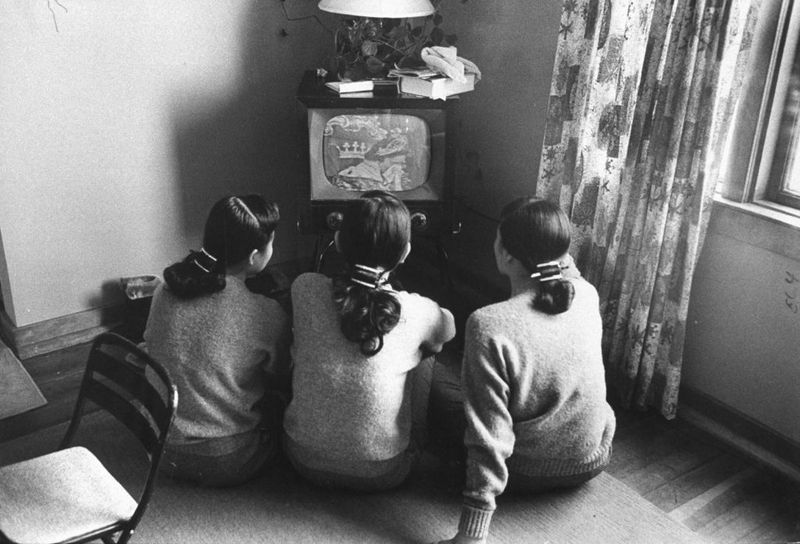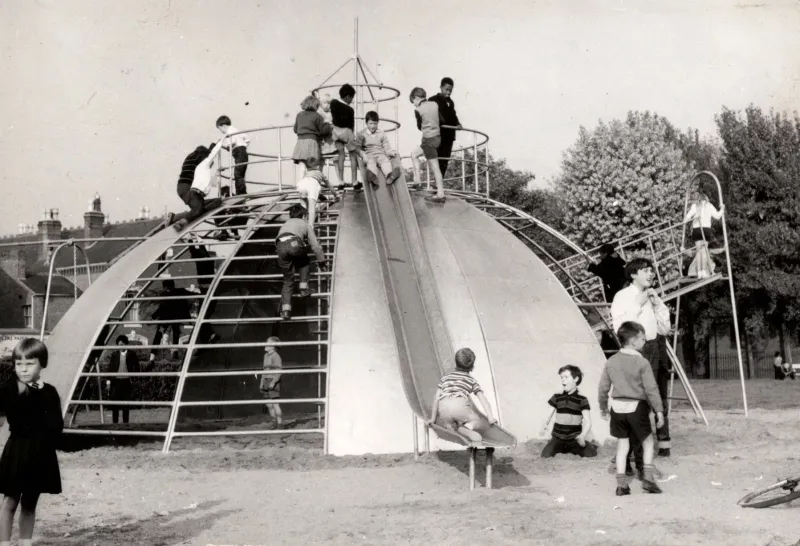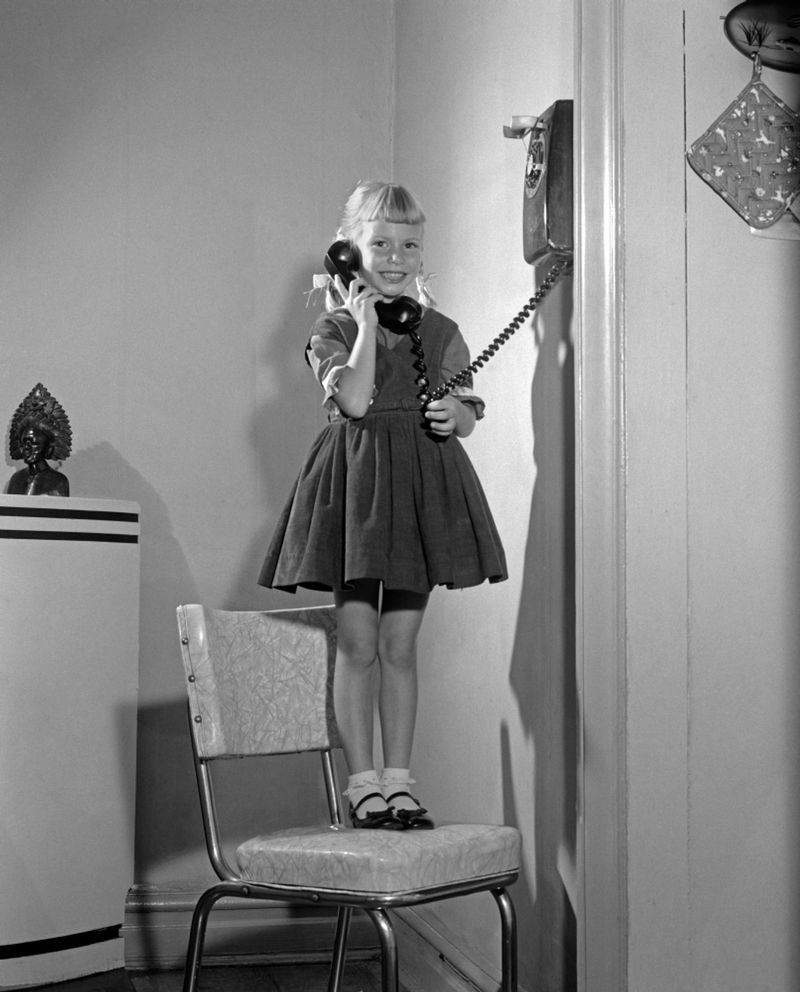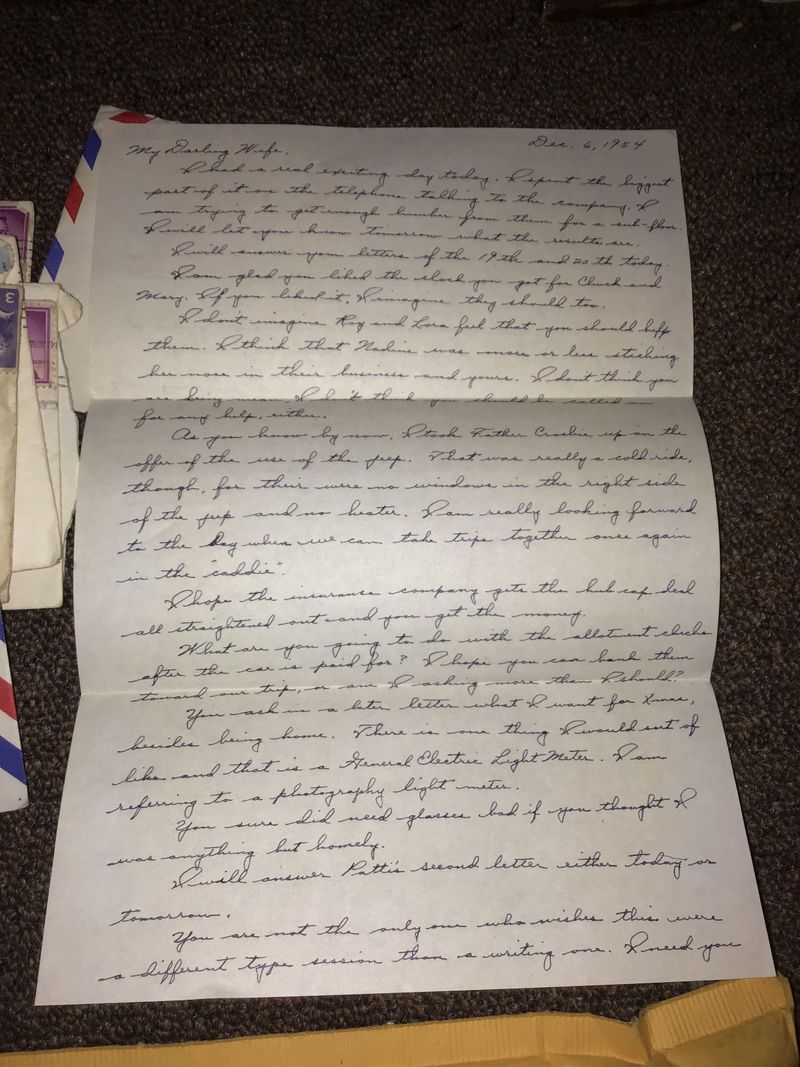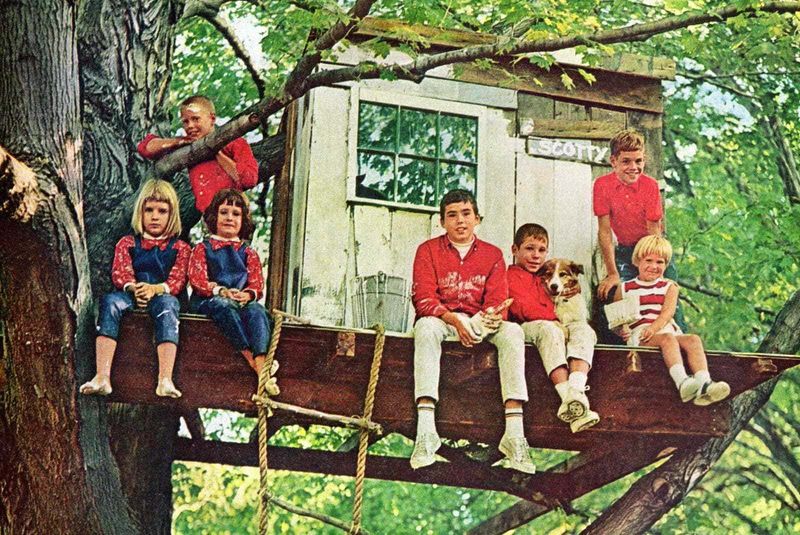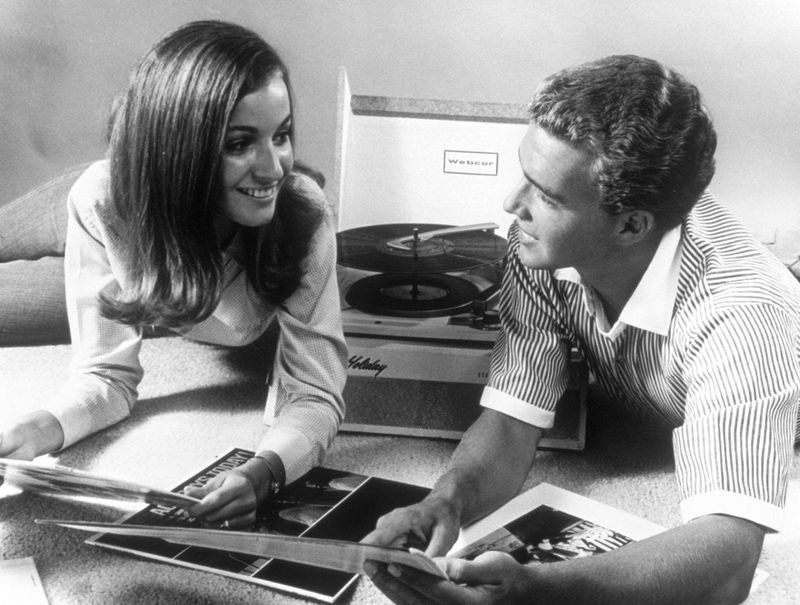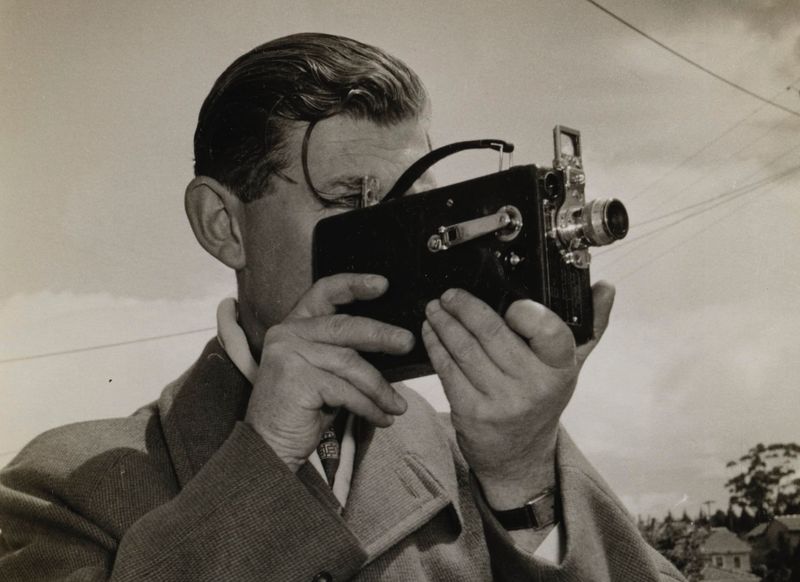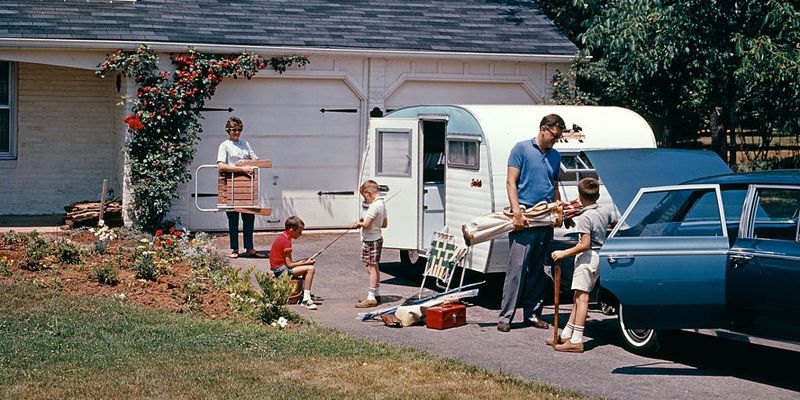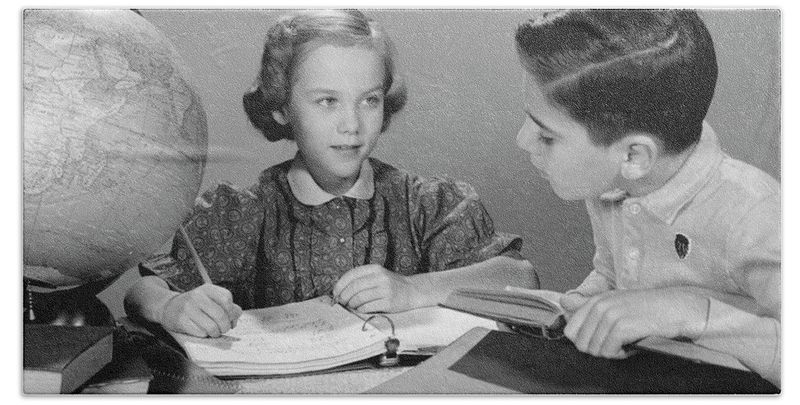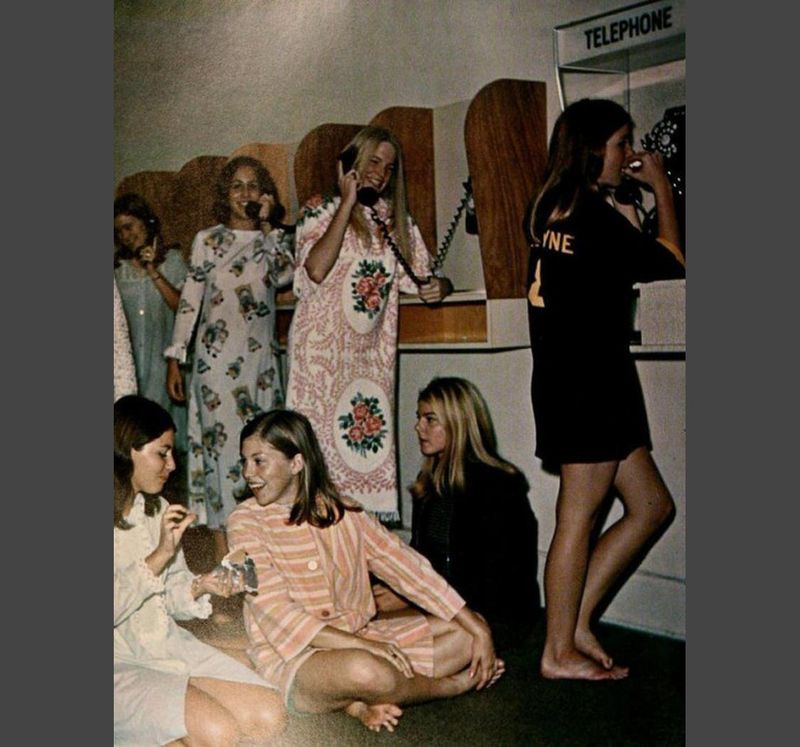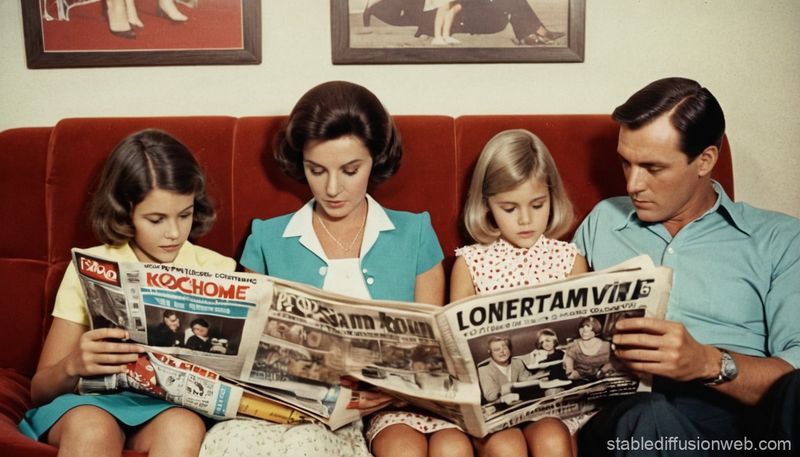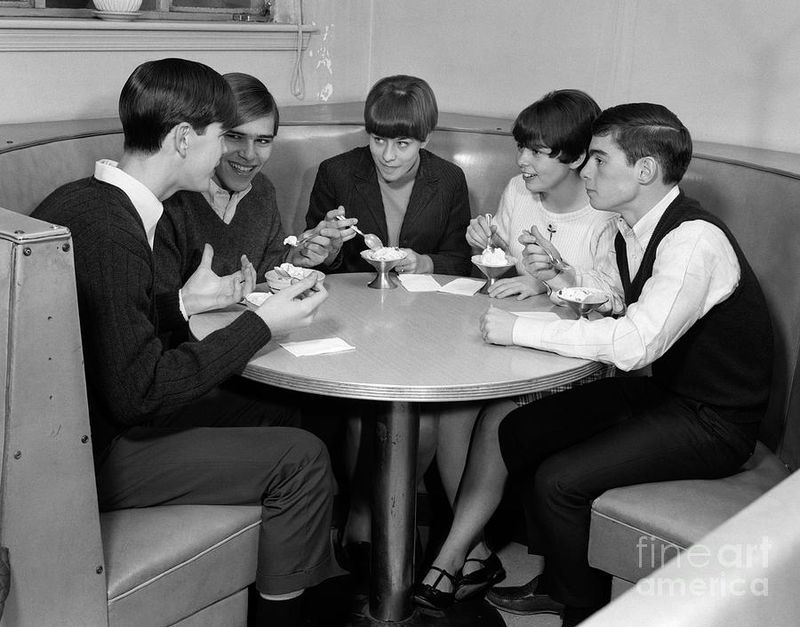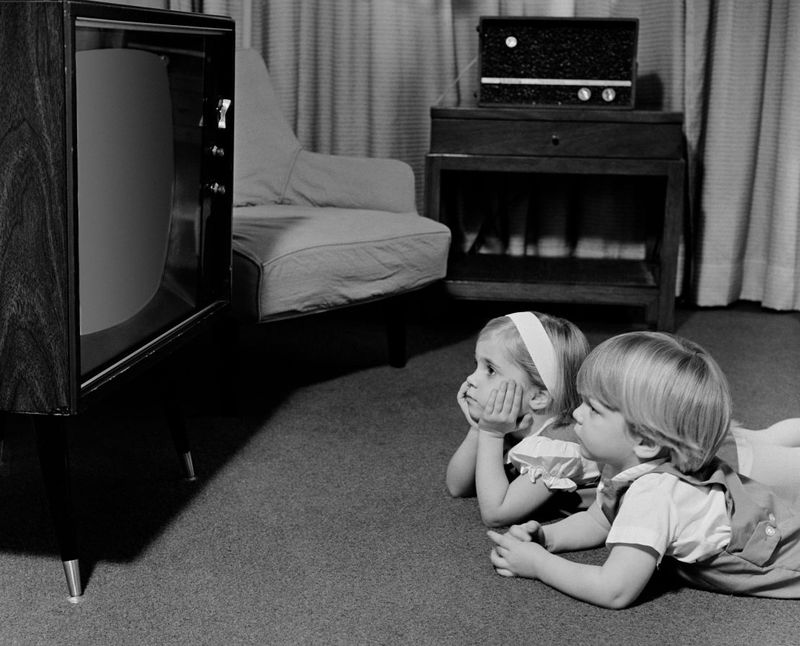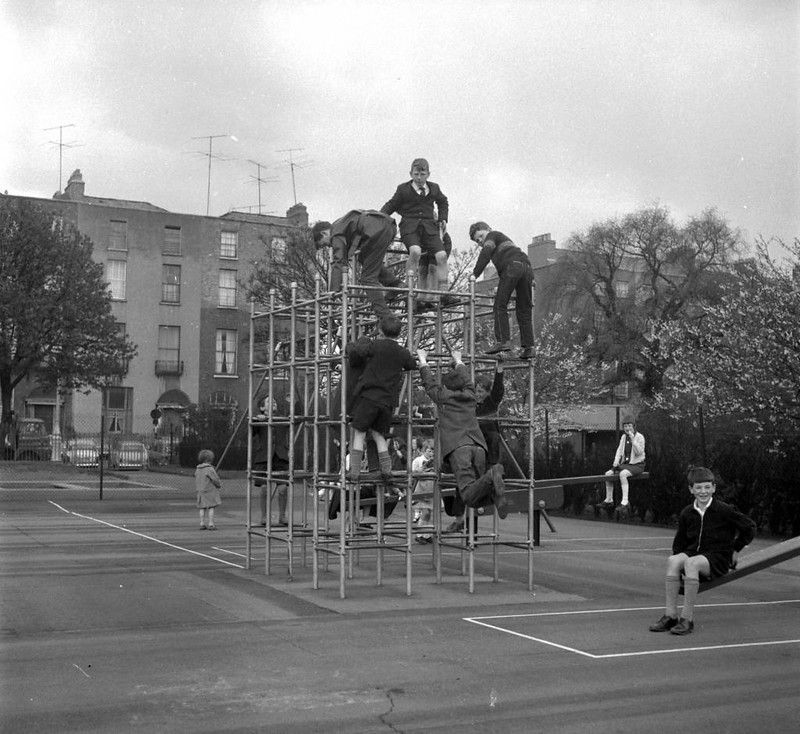Explore the unique and adventurous childhood experiences of the Baby Boomer generation, a time of outdoor play, creative problem-solving, and analog communication.
Delve into the aspects of their childhood that contrast sharply with today’s digital age, showcasing a world where imagination thrived, and simplicity ruled.
1. No Digital Distractions: Kids had to entertain themselves without smartphones, tablets, or video games.
Imagine a time when the term “screen time” didn’t exist. Children of the Baby Boomer era filled their days with outdoor adventures, exploring neighborhoods, and inventing games like tag or hide and seek.
The absence of smartphones meant kids developed social skills through face-to-face interactions.
Tablets and video games weren’t around to captivate their attention. Instead, they relied on creativity, using sticks as swords or transforming cardboard boxes into spaceships.
This era encouraged kids to develop strong imaginative skills, fostering independence and resourcefulness. Their playtime was a canvas for creativity, not bounded by the limits of a digital screen.
2. Limited TV Options: With only a few channels and no cable or streaming, rewatching the same shows was the norm.
Television in the Boomer era was a world of limited choices. With just a handful of channels, families often gathered to watch the few available programs. There was no binge-watching or on-demand options.
Instead, viewers waited eagerly for their favorite shows to air at specific times. Reruns were common, and families didn’t mind watching episodes multiple times.
This limited selection meant TV was a shared family activity, fostering discussions and bonding over beloved characters.
The absence of remote controls meant someone had to physically change the channel, adding to the communal experience of watching TV together.
3. Endless Outdoor Play: Children roamed the neighborhood unsupervised, inventing games and exploring freely.
Boomer kids had the freedom to explore their surroundings with minimal supervision. Riding bikes through suburban streets or playing in open fields, their days were filled with spontaneous adventures.
Parents didn’t worry as much about their whereabouts, trusting them to return by dinnertime. This autonomy allowed kids to develop a sense of independence and responsibility.
They learned to navigate social dynamics and problem-solve through play. Imaginary worlds came to life in backyards and parks, creating memories of laughter and camaraderie.
These unsupervised explorations became foundational experiences, teaching valuable life lessons outside the confines of structured activities.
4. Landline Communication: Without cell phones, arranging plans meant using payphones or waiting for home calls.
In the days before cell phones, making plans required patience and coordination. Kids called friends using rotary phones, often tethered to the wall by a long, spiraled cord. Payphones dotted the landscape, serving as vital communication hubs during outings.
Arranging a simple meet-up needed careful scheduling and trust, relying on promises made over the phone. The anticipation of waiting for a call created excitement. Conversations were deliberate, with pauses filled by the gentle hum of the dial tone.
This era of landline communication fostered a deep appreciation for verbal interaction, making each call a cherished connection.
5. Handwritten Letters: Keeping in touch required writing and waiting weeks for a reply via snail mail.
The art of letter writing thrived during the Boomer years. Friends separated by distance connected through handwritten notes, pouring thoughts onto paper with pen and ink. Letters traveled slowly, taking days or weeks to reach their destination.
This anticipation made receiving a letter a joyous event. The process of writing encouraged reflection and thoughtfulness, capturing emotions that could be revisited long after the paper had yellowed.
Stamps were carefully chosen, and envelopes sealed with care. This analog form of communication carried a personal touch, creating lasting bonds through words shared across miles.
6. Analog Photography: Capturing memories meant using film cameras and waiting for photos to be developed.
The magic of photography in the Boomer era involved film cameras with limited shots. Capturing a moment was intentional, as each click consumed valuable film. After snapping photos, families eagerly awaited the development process.
Weeks could pass before viewing the results. This delay added to the excitement, with each photo holding the potential of a cherished memory. Photos were tangible, stored in albums or displayed on walls.
Imperfections in pictures, like blurry smiles or closed eyes, were part of their charm. This analog approach taught patience and the value of preserving moments in time through careful curation.
7. DIY Entertainment: With no internet tutorials or apps, creativity was the go-to for building forts, treehouses, or backyard adventures.
Boomer kids were masters of DIY fun. Without digital distractions, their imaginations ran wild, constructing forts from blankets or building treehouses from scrap wood. They created entire worlds in their backyards, fashioning swords from sticks and crowns from flowers.
This resourcefulness fostered teamwork and ingenuity. Problem-solving became second nature, as they navigated the challenges of construction with limited tools. Each project was an adventure, with the journey often more valuable than the result.
These hands-on experiences provided a sense of accomplishment, teaching kids the power of creativity and collaboration long before the advent of online tutorials.
8. Library Research: Homework meant visiting libraries and flipping through encyclopedias instead of quick online searches.
In the pre-internet age, libraries were the epicenters of knowledge. Homework assignments required trips to local libraries, where rows of encyclopedias awaited eager learners.
The tactile experience of flipping through pages, guided by the smell of aging paper, created a sense of discovery. Research was a meticulous process, encouraging critical thinking and patience.
Students learned to sift through information, cross-referencing multiple sources to verify facts. The absence of instant answers fostered a deep appreciation for knowledge, rewarding those who delved deeply into subjects. This era instilled a lifelong love for books and the pursuit of learning.
9. Limited Music Sources: Listening to music was all about vinyl records, radio, or mixtapes—not streaming playlists.
Music in the Boomer era was a tactile experience. Vinyl records spun on turntables, their crackling sound filling rooms with rich melodies. The radio was a constant companion, offering a curated mix of hits and new discoveries.
Creating mixtapes involved carefully recording songs from the radio, capturing favorite tunes with the press of a button. This analog approach required patience and a keen ear.
The physical act of placing a needle on a record or pressing play on a cassette offered a satisfying ritual. Music was a shared experience, often enjoyed with friends or family, each note resonating deeply.
10. No Instant Information: Getting answers required asking an adult or looking through a physical encyclopedia.
In a world devoid of search engines, finding answers required a tactile quest for knowledge. Kids turned to adults or consulted encyclopedias to satisfy their curiosity.
These hefty volumes, often displayed prominently in homes, were treasure troves of information. Leafing through the pages was an adventure in itself, with each entry offering a new discovery.
Families often gathered to explore topics together, fostering discussions and shared learning experiences. This method of inquiry cultivated patience and a genuine thirst for understanding.
The satisfaction of uncovering information through effort and collaboration was a reward in its own right.
11. Manual Video Recording: Home movies were shot on bulky camcorders with limited recording time and no instant playback.
Recording memories in the Boomer era involved the use of cumbersome camcorders. These devices, often large and unwieldy, required careful handling. Capturing family moments meant planning, as film reels had limited capacity.
There was no instant playback; viewing the footage necessitated waiting until it was developed. This anticipation made each recorded moment precious. Families gathered to watch these films on projectors, reliving memories in flickering frames.
The absence of editing tools meant each take was authentic, with all its imperfections. This analog approach highlighted the value of preserving genuine memories, creating a visual legacy for future generations.
12. Simple, Local Shopping: Retail was confined to local stores, with limited product choices compared to today’s online abundance.
Shopping in the Boomer era was a community affair. Local stores lined main streets, offering a curated selection of goods. Shoppers engaged with friendly shopkeepers, who often knew them by name.
Choices were limited, requiring creativity and resourcefulness. This simplicity encouraged a mindful approach to consumption, with purchases made out of necessity rather than impulse.
The experience of walking through bustling markets, engaging in conversations, and discovering hidden treasures was a joy in itself. These local interactions fostered a sense of belonging and community, creating bonds that extended beyond mere transactions.
13. No GPS or Digital Maps: Navigating meant using paper maps and asking for directions, often leading to unexpected detours.
Navigating the world without GPS was an adventure of its own. Travelers relied on paper maps, unfolding them to chart their course. Detours were common, often leading to unexpected discoveries.
Asking locals for directions became part of the journey, with friendly exchanges offering insights into new destinations. This analog approach encouraged exploration and spontaneity.
The challenges of finding one’s way fostered problem-solving skills and adaptability. Even wrong turns became stories worth retelling, adding to the richness of travel experiences. These journeys, marked by curiosity and the thrill of discovery, created lasting memories.
14. Fewer Safety Nets: Boomers often played outside unsupervised, learning to fend for themselves in ways that seem risky now.
Boomer childhoods were marked by a sense of freedom. Kids played outdoors without the constant presence of adults, embracing risks that might seem daunting today.
Climbing trees, exploring forests, and building makeshift rafts were common adventures. This unsupervised play encouraged self-reliance and confidence. Children learned to assess risks, make decisions, and solve problems on their own.
These experiences fostered resilience and adaptability, qualities that served them well later in life. The thrill of discovery and the camaraderie of shared adventures left lasting impressions, shaping their understanding of the world and their place in it.
15. Analog Homework: Everything was done by hand on paper, from writing essays to doing math calculations.
Homework in the Boomer era was a manual endeavor. Essays were handwritten, each sentence crafted with care. Math problems required pencils and paper, with calculations showing each step.
Mistakes meant erasing and starting over, fostering attention to detail and perseverance. This tactile approach to learning encouraged active engagement with the material.
The physical act of writing reinforced memory retention, while the absence of digital aids demanded focus and diligence.
These analog methods cultivated a deep understanding of subjects, laying the groundwork for academic success and nurturing a lifelong love of learning.
16. Limited Communication Tools: Without texting or email, coordinating group play or outings required face-to-face or landline chats.
Coordinating social activities in the Boomer era required creativity and effort. Group plans were made through face-to-face conversations or over landline phones. The absence of texting and email meant messages had to be clear and concise.
Meeting at a designated time and place was essential, fostering accountability and punctuality. The process of arranging outings encouraged communication skills and social interaction.
These gatherings, often spontaneous, created cherished memories. The thrill of anticipation and the joy of shared experiences left lasting impressions, deepening friendships and creating bonds that transcended the limitations of technology.
17. Unfiltered News: Information came only from newspapers, radio, or evening TV news—no constant online updates.
News in the Boomer era was a tangible experience. Mornings began with newspapers, their pages rustling with the latest headlines. Radios provided a steady stream of updates, voices crackling with reports from around the world.
The evening TV news became a family ritual, offering a concise summary of the day’s events. This limited access to information fostered a measured understanding of the world, encouraging critical thinking and discussion.
The absence of constant updates allowed for reflection and analysis, with each news cycle offering a fresh perspective. This analog approach to news consumption created informed citizens.
18. Simple, In-Person Socializing: Friendships were built face-to-face rather than via social media or messaging apps.
Boomer friendships were forged through face-to-face interactions. Gatherings took place on porches, in parks, or at local diners, where conversations flowed freely without digital interruptions.
Socializing was a sensory experience, filled with laughter, shared meals, and heartfelt exchanges. The absence of social media meant connections were genuine, founded on mutual respect and shared interests.
These in-person interactions allowed friendships to deepen, with memories created through shared experiences rather than digital exchanges. This analog approach to socializing cultivated empathy and understanding, building bonds that stood the test of time.
19. No On-Demand Entertainment: Kids watched what was scheduled, with no option to binge-watch or skip to the best parts.
Entertainment in the Boomer era was a scheduled affair. Kids gathered around televisions to watch programs as they aired, with no option to pause or skip ahead.
This anticipation made each viewing special, with viewers eagerly awaiting their favorite shows. The absence of on-demand options meant that everyone watched the same episodes at the same time, creating shared cultural experiences.
Discussions about plot twists and characters became part of everyday conversations. This communal approach to entertainment fostered patience and appreciation, with each show becoming a cherished ritual in the rhythm of daily life.
20. Resourceful Problem Solving: Without modern conveniences, children learned to fix, improvise, and create their own fun with limited resources.
Boomer kids were adept at transforming ordinary objects into extraordinary playthings. A cardboard box could become a race car, and a stick could serve as a magic wand. This inventive spirit was born out of necessity, as modern conveniences were limited.
Problem-solving became second nature, with kids learning to make do with what they had. This resourcefulness encouraged creativity and innovation, traits that served them well into adulthood.
By improvising and experimenting, they developed a robust sense of self-reliance and adaptability. These experiences taught them the joy of discovery and the satisfaction of creating fun from scratch.
